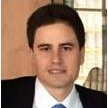Heat Transfer in Biomedical Applications
A special issue of Processes (ISSN 2227-9717). This special issue belongs to the section "Biological Processes and Systems".
Deadline for manuscript submissions: closed (31 December 2021) | Viewed by 14402
Special Issue Editors
Interests: bioheat transfer; porous media; hyperthermia; tumor modeling; LDL deposition; thermal ablation
Special Issues, Collections and Topics in MDPI journals
Interests: porous media; thermal energy storage; phase change materials; bioheat; hyperthermia
Special Issues, Collections and Topics in MDPI journals
Interests: mechanical engineering; computational fluid dynamics; computational heat transfer; biomedical engineering
Interests: porous media; multiphase transport; aircraft brakes; micro cantilever based biosensors; biofilms; macromolecule transport through arteries; cooling enhancement investigations; modeling of tissue and organs; natural convection in complex configurations; analysis of porous insulations; heat flux applications; free surface flows; flat-shaped heat pipes; thermal design and modeling; feasibility; optimization; parametric studies for various engineering applications and power electronics
Special Issues, Collections and Topics in MDPI journals
Special Issue Information
Dear Colleagues,
Heat transfer is of fundamental importance in many biomedical applications. For example, thermal excursions are used to selectively preserve or destroy cells and tissues, such as in biopreservation, which is an innovative technology, applied to cell and tissue banking, cell therapeutics, tissue engineering, organ transplantation, and assisted reproductive technologies.
There has been a significant growth in the field of thermal therapy in the past few decades. The application of heat to living tissues, from mild hyperthermia to high-temperature thermal ablation, has produced a host of well-documented genetic, cellular, and physiological responses that are being researched intensely for medical applications, particularly for treatment of solid cancerous tumors using image guidance.
Bioheat transfer modeling is the basis of thermotherapy and relates to the thermoregulation system in a human body. Variations of temperature and heat transfer in a human body depend on the arterial and venous blood flowrates, blood perfusion rate, and metabolic heat generation, heat conduction within the tissue, thermal properties of blood and tissue, as well as strongly affected by the human body geometry. Several anatomical structures can be considered as a fluid saturated porous medium, as tissue can be considered as a solid matrix with blood penetrating the pore space of the medium.
A number of biomedical applications involve delivering biomodified nanoparticles to malignant cells and rapidly heating nanoparticles with an external source such as laser, ultrasound, or an electromagnetic wave to produce a therapeutic thermal effect or to release drugs. The interaction of nanoparticles with the external source and the subsequent heating effect are fundamental for the successful deployment of these novel techniques.
The aim of this Special Issue is to collect original research articles on the most recent analytical, numerical, and experimental results in this field, with the purpose of providing guidelines for future research directions. Potential topics include, but are not limited to:
- Cryobiology and hyperthermic biology;
- Thermal therapies;
- Heat transfer in clinical dentistry;
- Heat transfer inophthalmology;
- Numerical and analytical investigations of heat transfer in living tissues;
- Employment of nanoparticles for targeted heating and in bio heat transfer enhancement;
- Thermal management in the implantable medical devices.
Dr. Assunta Andreozzi
Dr. Marcello Iasiello
Dr. Victoria Timchenko
Prof. Dr. Kambiz Vafai
Guest Editors
Manuscript Submission Information
Manuscripts should be submitted online at www.mdpi.com by registering and logging in to this website. Once you are registered, click here to go to the submission form. Manuscripts can be submitted until the deadline. All submissions that pass pre-check are peer-reviewed. Accepted papers will be published continuously in the journal (as soon as accepted) and will be listed together on the special issue website. Research articles, review articles as well as short communications are invited. For planned papers, a title and short abstract (about 100 words) can be sent to the Editorial Office for announcement on this website.
Submitted manuscripts should not have been published previously, nor be under consideration for publication elsewhere (except conference proceedings papers). All manuscripts are thoroughly refereed through a single-blind peer-review process. A guide for authors and other relevant information for submission of manuscripts is available on the Instructions for Authors page. Processes is an international peer-reviewed open access monthly journal published by MDPI.
Please visit the Instructions for Authors page before submitting a manuscript. The Article Processing Charge (APC) for publication in this open access journal is 2400 CHF (Swiss Francs). Submitted papers should be well formatted and use good English. Authors may use MDPI's English editing service prior to publication or during author revisions.
Keywords
- Heat transfer in living tissue
- Hyperthermia
- Bio heat transfer enhancement
- Thermal therapies
- Biomedical applications








